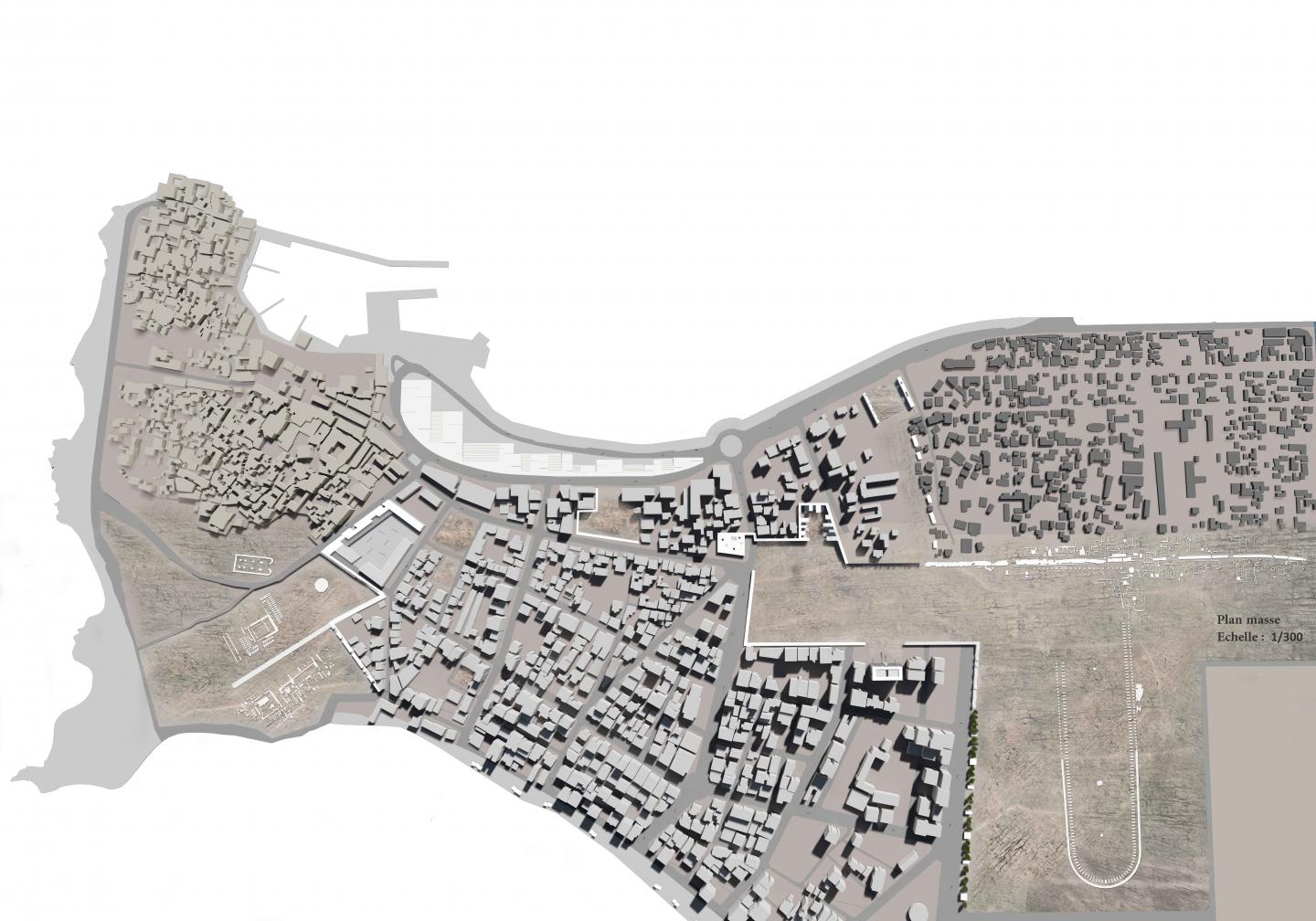The city of Tyr has undergone major transformations from an island to a coastal zone. Tyr is a “Fragmented, Mosaic City” similar to a puzzle, it is composed of several fragments that work independently from each other, such as: harbor, modern city, old town, two archeological sites and a refugee camp. Tyr's internal limits are variable. How to connect these fragments while keeping the charm of each one? The purpose is to make porous boundaries between these fragments by creating a link through the modern city, because of its central position and it touches the limits of other fragments. The modern city has three types of archaeology: visible, invisible and the built on. By 2030, the city will be saturated. The solution is to delimit and define the voids in the city and give them value through architecture. How to live a void while preserving it? There are many ways: live the limits and borders, create a floating volume, live the walls of an archaeological excavation, or build in an ephemeral way. A place is a landmark in a city. The project consists of different courtyards that follows the evolution of the Agora through centuries: a meeting place, Agora of the city (gallery + columns), Courtyard inside a building, Khan U shape, market, Archaeological site, Park, Square...
2018
0000
Int 1: The idea is to to preserve the archaeological site by living on the limits with a minimal footprint. The project responds at the same time to the needs of the city and the archaeological site while creating the “Agora of the city”.
Int 2: It includes the park (make a breathing city),
the parking and the market (Souk).
The purpose is to re-value “Al Bawwabah Square”
Int 3: Purpose is to give back value to the “Roman Agora” and “Jaafariah Square” by living on the limits.





















